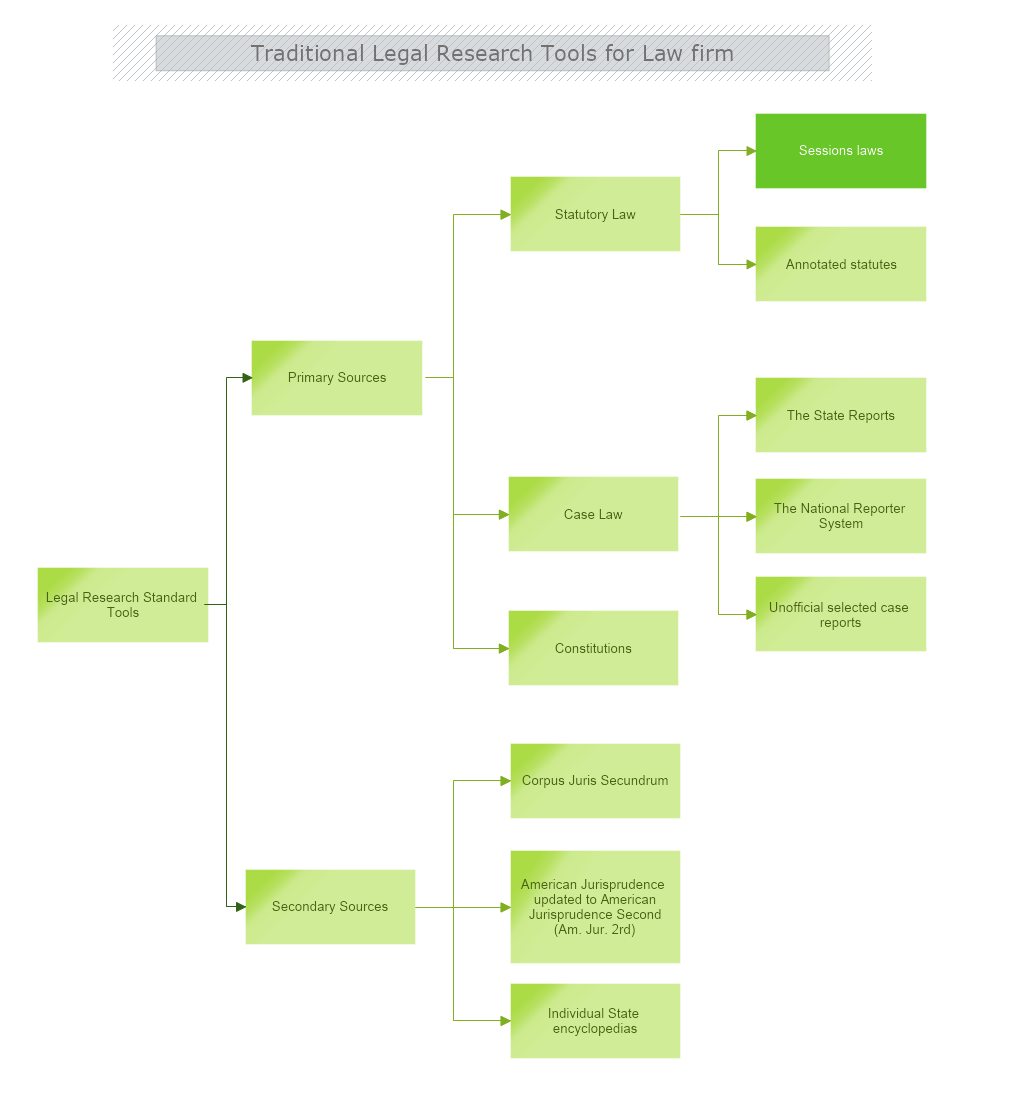This is a Traditional Legal Research Tools for Law firm organized in a workflow diagram to present a step by step standard legal research tools. The template is 100% customizable and you can edit every aspect of it with a few simple clicks in MyDraw.
Legal research tools are generally divided into two broad categories: primary sources and secondary sources.
Primary legal sources- the actual law in the form of constitutions, court cases, statutes, and administrative rules and regulations.
Secondary legal sources discuss, analyze, describe, explain, or critique the law. Secondary sources are used to help locate primary sources of law, define legal words and phrases. This type of source also commits to legal research. Secondary legal sources are- encyclopedias, amendments to the law, treatises, and restatements.
Examples of Primary and Secondary sources
Primary Law consists of sources that state the actual law, such as:
- Constitution (either Federal or State).
- Statutes, municipal codes.
- Cases
- Rules and Regulations (established by administrative government agencies).
Secondary Law consists of sources that explain, criticize, discuss, or help locate primary law, that includes:
- Legal dictionaries.
- Legal encyclopedias.
- Reviews and journals.
- Manuals and guides on how to practice law.
Legal research
- Finding primary sources of law, or authority, in a given jurisdiction (cases, statutes, regulations, etc.).
- Searching secondary sources of law.
- Non-legal sources for investigating or supporting information.
Best practices for Legal research
- Go over all the legal sources of the case files.
- Analyze the facts and frame the legal issues.
- Assess what you know and what information you need to obtain.
- Note the jurisdiction and the primary law.
- Generate potential search terms.
